Access for Individuals Who Are Blind or Have Low Vision
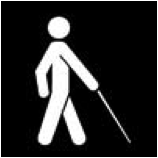
This access symbol indicates access for individuals who lack either partial or complete visual ability. For example, the access symbol may be used in public places, such as museums and parks, to help the concerned individuals find their way to a guided tour, to a scented garden in the park, or to a touchable exhibit in the museum.
Symbol of Wheelchair Accessibility

his sign or symbol signifies access for individuals whose mobility is limited, such as those who are wheelchair bound. It shows that the facility posting the sign has been designed to cater to the needs of those with restricted mobility. The sign points to either a ramped entrance or an elevator.
The Accessible Icon Project is a highly visible activity that is striving to change the symbol for wheelchair accessibility. Specifically, the Accessible Icon Project feels that the current symbol (above) may depict individuals with disabilities as being inactive. Their suggested new symbol is a more active image, which shows individuals with disabilities as more physically engaged (below).
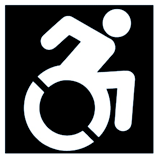
Audio Description
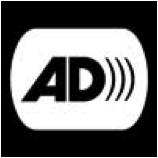
This symbol is of great use to individuals who are visually impaired. It can be spotted while viewing television, video, performing/visual arts, and films. With the use of headphones or a surround-sound stereo, the concerned individual can listen to detailed audio commentary or narration of the visual production, as rendered by a trained audio describer.
Telephone Typewriter
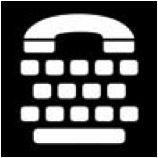
This symbol has several titles, including Telephone Typewriter (TTY), Text Telephone (TT), or Telecommunications Device for the Deaf (TDD). The symbol signifies the availability of a nearby device that could aid interactions and conversations between two individuals, one or both of whom is speech- or hearing-impaired.
Volume Control Telephone

Not all people can manage or hear with the same sound level/volume. This symbol indicates the availability of a telephone with adjustable handset volumes or the ability to amplify sound. It is primarily of use to individuals with hearing impairments.
Assistive Listening Systems
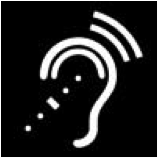
This image is a symbol of an assistive listening system. These systems help transmit sounds to audibly impaired individuals through the use of headsets or hearing aids, and may include infrared systems, loop systems, and FM systems. It is possible to obtain portable assistive listening systems from the same vendors who supply this equipment for large conferences and meetings.
Sign Language Interpretation

This symbol generally can be found on the invitations and advertising posters, as well as at the actual venues, for public events, lectures, tours and guides, and conferences. The symbol indicates the availability of an interpreter at the venue who could help the audibly impaired to understand the proceedings by interpreting the proceeding into sign language.
Accessible Print

This access symbol, which reads “Large Print,” identifies that a printed copy of the text is also available to be printed with a font size of 18 or higher. This symbol usually can be found on brochures. pamphlets, catalogues, guides to museums, and programs, such as those for the theater or concerts.
In addition to the larger print, the fonts used for the accessible print will be either sans serif or modified serif, which will help provide special care with respect to word spacing and letter spacing. In addition, the material will be printed with a high contrast between the text and the background.
Information Symbol

The Information Symbol indicates the availability of required information that is specific to the location where it the symbol is found. For instance, the information symbol might lead the way to other accessibilities, including large print texts, audio devices, recorded material for visual interpretation, sign interpretation, and guided tours.
Closed Captioning

The Subtitles or Closed Captioning access symbol helps individuals identify that the visual to be played can also be enjoyed by those with hearing disabilities. For example, subtitles or closed captions can be found with videos, films, exhibitions, and presentations.
The subtitles or closed captions allow viewers to read the proceedings through text captions that appear on the screen. Although the subtitles may not necessarily be verbatim of the visual script, they help get the information across. Viewers can turn the subtitles or closed captions on and off, for instance through their television menus.
Open Captioning

The Open Captioning symbol indicates that text captions, interpreting dialogues, and other audio cues to a visual presentation have been included in the video, film, exhibit, or television program. Among many accessibility benefits, open captioning also can be used to encourage children to read. Further, with the help of open captioning, the volume levels in museums and restaurants can be lowered.
Many viewers, especially the hearing impaired and individuals for whom English is their second language, often choose open captioning over closed captioning. The difference between open and closed captioning is that in closed captioning, the subtitles or text captions can be turned on or off, based on viewer discretion. On the other hand, open captions continue to appear on screen and are streamed in association with the visual, regardless of the viewer’s choice. Thus, open captioning may be preferred when catering to a larger audience, whereas closed captioning may be preferred for private viewing.
Braille Symbol
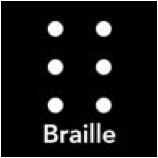
When this access symbol is posted on a facility or in printed material, it indicates that the additional signage or printed material is also available in Braille. For instance, such signage or printed material may include exhibition labels or publications.
This Braille access symbol is designed especially to help partially or completely visually impaired individuals read and interpret printed text, since all the available text—including the Braille sign itself—is printed in Braille.